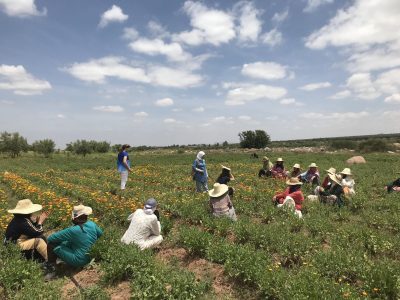A Model to Achieve the Model for Development in Morocco

There may be irony in Morocco now reconsidering and revamping its development model, which is its national guiding frameworks for social and environmental fulfillment. I have long been and remain a believer in Morocco’s existing frameworks for the people’s development. There is, after all, a lot to like. Municipalities are to create development plans made from the participation of all communities and groups. Environmental management is understood to integrate the local people. Agricultural programs seek to achieve the value-chain with communities of small landholders. Morocco is committed to the goals of decentralization, renewable energy, liberation of women and youth from social and economic hindrances, and well-established southern unity. Multicultural preservation is a non-equivocal national choice.
Furthermore, there are a lot more to these initiatives when we consider the innovation within each, and the extra value that can be accomplished when these frameworks operate well in tandem. For example, the Decentralization Roadmap designates the local communities as planners and implementors of development projects, to be buttressed by national level, private, and public support. Decentralization is made even more viable because also part of the Morocco model is its national Municipal Charter, which requires locally elected officials and civil society to plan alongside all community members in the creation of their human development plans. In the model design, this means that the participatory community work of municipalities and their forming of partnerships toward creating projects managed by and for the benefit of the people, contribute to the emergence of a decentralized system. This would have public administrations considerably more aware and directly supportive of the people’s priorities.
For Morocco, these and the other existing frameworks – call them together, model one – are intent upon and could set forward sustainable development initiatives across the countryside. Yet, it is honestly the rare exception when a rural municipality creates development plans genuinely reflective of collective community identification of the needed projects in their area. Rural women and girls are not, for the most part, aware of the Moroccan family code and the human rights that are theirs. Morocco’s unity with its multicultural identity is beautiful and real, but its translation into the critical growth for the populace is insufficient.
This search since 2019 to redefine Morocco’s model was made possible by the poverty-related frustrations at all levels and sectors of Moroccan society. It is commendable that the national dissatisfaction has brought on this reevaluation, with now six months remaining before the anticipated completion by the appointed commission. I hope that the framers of a new Moroccan approach – model two – fully appreciate the good afforded by model one. I would go further and suggest that model two would be visionary and bold by offering programmatic actions to successfully implement model one.
Morocco’s development frustrations stem from insufficient training in participatory development among those responsible for facilitating community dialogue and actions. Achieving success within Morocco’s current model depends on communities being integral to planning and management, and that condition can only be achieved when there are trained facilitators of participatory planning. Members of local councils typically have not experienced capacity-building programs that enhance these necessary applied skills. We cannot forge decentralization from beneficiary-determined community projects when the people in these jurisdictions have never gained the opportunity to learn how.
The projects people most need and want require funding, even when beneficiaries provide some in-kind labor. Therefore, the National Initiative for Human Development, Morocco’s flagship development program for people’s projects, should increase its support of municipal council initiatives once people’s participation in the design has genuinely occurred.
Morocco’s model today, in a nutshell, is to implement community development ideas for change along with public and private partners. A new model cannot escape implementation of the first one. Therefore, I will certainly take more comfort if the basis of model two were to emerge from almond growers in Taroudant, nomadic communities in the south, cumin harvesters in the east, women and girls of mountain communities, artisanal food processors in Azilal, recent high school graduates in Driouch, and youth living in potentially-limiting remote places. I hope it is a model composed by the people for whom it is intended.
Then, we will learn the composite of ways we can align resources with community actions for empowerment, decision-making, implementation, and transformation. After all, worthwhile models are those that reveal the means of securing support for communities to gain control over their livelihoods and future.
*
Note to readers: please click the share buttons above or below. Forward this article to your email lists. Crosspost on your blog site, internet forums. etc.
This article was originally published on High Atlas Foundation.
Dr. Yossef Ben-Meir is a sociologist living in Marrakech, and president of the High Atlas Foundation, a non-for-profit organization dedicated to sustainable development in Morocco.
Featured image: The Aboghlou women’s cooperative meets outside in Ourika Valley, Morocco.

